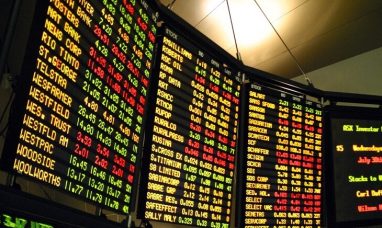The Wall Street slump intensified Friday as weak U.S. job growth and a fresh wave of tariffs from the White House sent stocks tumbling and bond yields sharply lower. The S&P 500 dropped 1.5%, putting it on track for its worst daily performance since late May. The Dow Jones Industrial Average sank 486 points, or 1.1%, while the Nasdaq Composite plummeted 2% amid broad-based tech sell-offs.
This sharp reversal follows last week’s rally when major indexes hit new records. Now, with concerns mounting over economic growth and global trade policy, investor sentiment has turned notably cautious.
Disappointing Jobs Report Fuels Recession Fears
The trigger for Friday’s Wall Street slump came in the form of a surprisingly weak U.S. jobs report. Employers added just 73,000 jobs in July—far short of economist forecasts. Making matters worse, the Labor Department revised prior months’ data, cutting a staggering 258,000 jobs from May and June payrolls combined.
This weakness in the labor market has shifted expectations for monetary policy. According to CME FedWatch data, market odds of a Federal Reserve rate cut in September surged to 85%, up from just 40% a day earlier. The yield on the 10-year Treasury dropped from 4.39% to 4.22%, and the 2-year Treasury yield fell from 3.94% to 3.71%.
“The data cracked the illusion of labor market strength,” said Ellen Zentner, Chief U.S. Economist at Morgan Stanley. “A Fed that was hesitant to lower rates may now see a clearer path to easing.”
Tariffs Reignite Uncertainty for Markets
Adding fuel to the Wall Street slump were the latest developments in trade policy. President Donald Trump announced new tariff rates on dozens of countries, though he pushed the effective date to August 7, increasing the unpredictability for businesses.
The move affects 66 countries and regions, including the European Union, Taiwan, and the Falkland Islands. Companies and analysts say this uncertain, shifting tariff policy is making it difficult to plan, invest, and price products.
Big-name corporations have begun sounding the alarm. Walmart Inc. (NYSE:WMT), Procter & Gamble Co. (NYSE:PG), and others have warned that import taxes are cutting into profits and leading to higher consumer prices.
Tech Stocks Lead the Decline
Tech giants bore the brunt of Friday’s Wall Street slump. Despite solid quarterly results, Amazon.com Inc. (NASDAQ:AMZN) fell 8.2% and Apple Inc. (NASDAQ:AAPL) declined 1.7%. Both companies cited tariffs and geopolitical uncertainty as factors clouding their future performance. Apple even forecast a $1.1 billion hit from import duties in its current quarter.
Meanwhile, Exxon Mobil Corp. (NYSE:XOM) lost 1.9% after reporting its lowest quarterly profit in four years amid falling oil prices and rising OPEC+ production.
Global Sell-Off Spreads Beyond U.S. Borders
The Wall Street slump was mirrored across global markets. Europe’s DAX fell 2.7% and CAC 40 dropped 2.9%, while South Korea’s Kospi plunged 3.9%, highlighting fears of a broader economic slowdown.
With inflation still hovering above the Fed’s 2% target, the central bank remains cautious. But with labor market deterioration and businesses struggling with tariff impacts, pressure is mounting for a rate cut. Fed Chair Jerome Powell and the 12-member Federal Open Market Committee (FOMC) held rates steady at their last meeting, but further economic weakness could shift that stance.
What’s Next for Wall Street?
The Wall Street slump could continue if upcoming economic data confirms a slowdown. Investors are watching closely for updates on inflation, consumer spending, and corporate earnings in the coming weeks.
For now, market volatility is back—and traders, analysts, and policymakers are all recalibrating their expectations amid rising uncertainty. Whether this is a temporary dip or the start of a deeper correction remains to be seen, but the warning signs are growing louder.
Featured Image – Freepik







